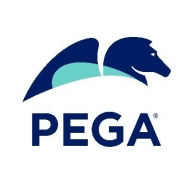

Pega Platform and IBM WebSphere BPMS compete in the business process management space. Pega Platform seems to have an edge in pricing and customer support, while IBM WebSphere BPMS excels in its feature set.
Features: Pega Platform is noted for its agility, integrated AI capabilities, and rapid adaptability to changing business processes. IBM WebSphere BPMS offers a comprehensive feature set supporting complex enterprise-level processes and scalability, coupled with robust integration options.
Room for Improvement: Pega Platform could enhance its scalability and enterprise-level robustness, and improve support for more complex integrations. IBM WebSphere BPMS could benefit from a more intuitive user interface, faster deployment times, and reduced setup complexity to appeal to smaller enterprises.
Ease of Deployment and Customer Service: Pega Platform provides an intuitive deployment process with efficient customer support, suiting businesses needing rapid setup. IBM WebSphere BPMS, although requiring more setup time due to complexity, offers extensive documentation and reliable customer service, catering to enterprises requiring in-depth technical resources.
Pricing and ROI: Pega Platform offers competitive upfront costs and emphasizes value through quick ROI. IBM WebSphere BPMS, while involving higher initial costs, promises significant long-term returns through advanced capabilities, offering potential financial returns for significant investments.
| Product | Market Share (%) |
|---|---|
| Pega Platform | 6.3% |
| IBM WebSphere BPMS | 0.3% |
| Other | 93.4% |

| Company Size | Count |
|---|---|
| Small Business | 9 |
| Midsize Enterprise | 15 |
| Large Enterprise | 68 |
Pega Platform facilitates business process management, case management, and workflow automation for industries like banking, insurance, and healthcare. It supports digital transformation and customer service enhancements with its low-code capabilities and seamless integrations.
Pega Platform enables users to create efficient systems for case management, financial operations, and digital transformations. It provides tools for client onboarding, quoting, claims processing, customer experience improvements, and content management. Pega's low-code approach allows for the automation of complex processes, making it suitable for enterprises looking for adaptability and rapid deployment. While it offers strong real-time analytics and decision automation, users acknowledge challenges in user interface, integration, and performance aspects. High costs and a learning curve need attention, and enhancements in AI features and cloud services are desired.
What are the key features of Pega Platform?In banking, Pega Platform automates loan processing, accelerates customer onboarding, and manages compliance. Insurance companies benefit from streamlined claims processing and policy management. Healthcare sectors use the platform for patient engagement and care coordination, enabling organizations to adapt quickly to changing industry requirements.
We monitor all Process Automation reviews to prevent fraudulent reviews and keep review quality high. We do not post reviews by company employees or direct competitors. We validate each review for authenticity via cross-reference with LinkedIn, and personal follow-up with the reviewer when necessary.